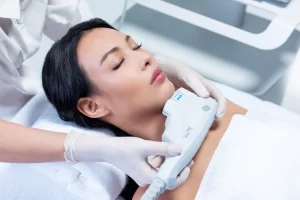
Even though nobody wants to get keloid scars after a piercing or injury, there’s no real way to predict whether it will happen or not.
Keloid scars are large, raised, dark and sometimes painful and itchy. They will also continue to grow if left untreated.
Keloid scars are often confused with hypertrophic scars but the key difference is that hypertrophic scars won’t grow past the boundaries of the original injury.
The reality is that there’s no definitive reason why some people develop keloid scars and why they appear on certain areas of the body but not on others. We do know that the signals that control growth change are what cause keloid but it’s not certain why these changes occur.
Who has a higher risk for keloid scars?
Keloids scars are just as common amongst men as they are amongst women and in many cases, keloids can run in a family.
Keloids can also form at any age but they do seem to occur more frequently between the ages of 10 and 30. Research shows the keloids are less likely in kids and the elderly but can still occur at any age.
Keloids can occur on all types of skin but it seems that they’re more common amongst people with darker skin pigments or those with very fair skin. Certain areas of the body are also more prone to keloid scars, particularly the ears or other areas that can easily be pierced.
Preventing & treating keloid scars
The DOC Clinic recommends seeking treatment for your keloid scars sooner rather than later as they will continue to grow. Injectable treatments can be used to reduce the appearance of keloid scars over several sessions.
These injections will soften the scar and gradually shrink them, leaving you with a smoother skin surface. How many injections you will require is dependent on the size of the scar, the number of scars and how your body responds to them. In some cases, surgery may be required to remove the keloid.
To prevent keloid scars from forming, it helps to make choices that will minimise the chances of you developing these scars in the first place.
If you know that you have a higher risk of developing these scars, it’s best to avoid piercings or elective surgeries that could cause keloids to develop.
If surgery is unavoidable and you do want to go ahead with a piercing, it’s important to take the necessary steps to avoid infection and reduce any friction or tension on that area of the skin until it heals completely.
It also helps to follow a healthy lifestyle that includes a good diet, lots of exercise and no smoking.
Basically, anything that you can do to help your body heal will go a long way in preventing keloid formation. However, even by taking these steps, keloids can still occur, which is when you can turn to reputable professionals such as The DOC Clinic.




